In the realm of automobile maintenance, performance, and safety, wheel bearings are an important consideration that is usually neglected during routine maintenance. Most travelers probably think of them as rather little tools because these small items are vital in the delivery of permitting movement of wheels of the vehicle while providing structural strength against the normal driving stresses. But, as with every other rotating part, wheel bearings can develop problems. Bad wheel bearings have adverse effects, which, if neglected, can compromise the safety and purpose of the vehicle. In this regard, this essay seeks to inform the reader of the ten most common adverse effects of bad wheel bearings for timely intervention so as to avoid further damage or expensive repairs. Whether you are an avid fan of cars or a recreational driver, knowing these serious symptoms of damage is important for ensuring the proper functioning of your vehicle.
What are the signs of a failing wheel bearing?
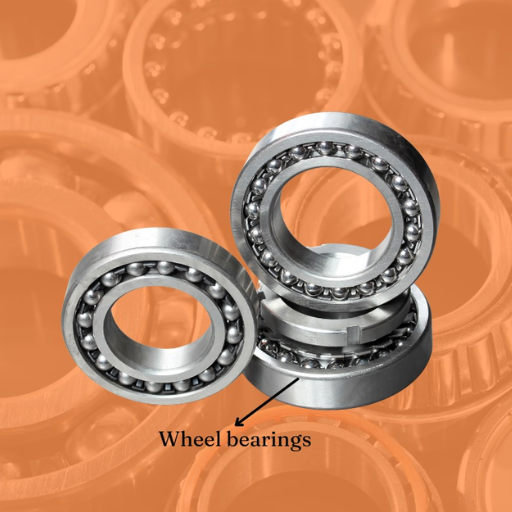
Worn-out wheel bearings may make grinding, growling, or humming sounds or vibrations, and turning the steering wheel may produce the same sound. Other indicators of wearing of wheel bearing includes uneven tire wear, a rise in the steering wheel or poor vehicle stability. A certain amount of looseness in the wheel or wobbling motion, triggering of the ABS warning light, and overheating in the wheel hub region can be other symptoms associated with the wearing out of a wheel bearing. If such problems are fixed early, further losses can be avoided, and safety measures are provided.
Unusual noises: Grinding, humming, and rumbling
grinding, humming, or rumbling sounds are usually signs of a problem with the wheel bearings or related components. Grinding is most of the time thought to mean that the bearings have been heavily worn out or damaged, therefore losing their effectiveness. Humming sounds are the noises that the bearings produce when they begin to fail; they crystallize due to a lack of lubrication or dirt ingress. Rumbling, however, may be indicative of more deep wearing or mispositioning of the bearing and/or the components. These noises should never be disregarded because rectification of the problem in its infancy can save a lot of money and ensure the safety of the vehicle.
Steering wheel vibrations and looseness
Regarding steering wheel vibrations and steering wheel looseness, let me say these problems are generally related to a few simple causes, and, as a rule, it is much faster to follow the diagnosis procedures step by step. This is how I do:
- Tire Balance and Alignment: The most frequent cause of steering wheel shaking is unbalanced tires or the wheels not being aligned properly. If the tires are not balanced, they will exert unequal force when they are rolling, and this will result in the steering wheel shaking, especially when going at fast speeds.
- Worn Suspension or Steering Components: Loose or worn steering components, such as ball joints, tie rods, control arms, etc., tend to make the steering feel easy. These components play an important role in making sure that the vehicle is stable, and these forces do get worn out, so steering feels different.
- Warped Brake Rotors: If steering vibrates during braking, then the reason for that could be warped rotors on the brakes. Warped rotors occur when there is uneven thickness on the rotors; this happens quite often due to frequent braking or the material used being of low quality.
- Wheel Bearings: Similar to noises, vibrations during steering can also occur due to broken wheel bearings. They add movement in the axle wheel connection that is then transferred to the steering wheel.
- Tire or Wheel Damage: An unevenly worn or bent wheel rim or a tire can also lead to a shaky feeling when in motion. A good start in this regard is to inspect the tires for any obvious damage or abnormal wear patterns.
Usually, it all starts with a comprehensive inspection of the car’s tires, suspension elements, and brakes- starting with the brakes and wheels. If you ever have any kind of looseness in the steering, I’d suggest taking care of that problem as soon as possible. It could turn into a safety issue.
Uneven tire wear and its implications
Tire wear can be uneven due to several reasons, and pinpointing it is necessary for the safety and operation of your car. The following are relevant parameters to account for when dealing with this problem in more detail:
- Tire Alignment: One of the frequent reasons for the uneven wear on your tires is misalignment of the wheels. If some of your tires are facing different directions, then definitely certain parts of your tread will come under more pressure than other parts, making some areas of the tire wear faster than others. Doing regular alignment checks and corrections can help you out with this.
- Tire Pressure: Both underinflated and overinflated tires tend to wear out your tires unevenly, only that the edges of underinflated tires don’t wear out as much while the center wears out excessively. Make sure you use the pressure levels recommended by the manufacturer of the vehicle, and that can easily be obtained from the user manual or the sticker found on the driver-side door.
- Suspension Health: Imbalance and uneven tire wear can be caused by damaged or worn-out components of the suspension system, like shocks or struts. The suspension system is of great importance to maintain contact between the tires and the road plane, and inspecting it regularly can help you save yourself from wear and tear problems.
- Tire Rotation Practices: If you own a front-wheel or rear-wheel-drive car, you should consider rotating your tires as it prevents uneven wearing. This is because all four of your tires do not get the same stress depending on their position. Because tires wear out uniformly with regular rotation, they will not lose their integrity early.
- Driving Habits: Slamming the brakes, high-speed cornering, and erratic driving can add to uneven wear. Gone are the days where you thought a monotonous style of driving was boring, it actually helps you save your tires and gas.
- Road Conditions: Driving on bumpy roads that are filled with potholes isn’t ideal if you want your tires to stay functional for a long time, as it, of course, promotes uneven wearing of tires. If you can, stay away from such areas or ensure that you drive slowly over them. What Tires should be rotated when and where?
To maintain effective tire performance, it is crucial to rotate tires regularly in order to minimize vibrations, increase efficiencies, and optimize overall effectiveness. Additionally, such practices augment appropriate driving behavior as well as decrease the overall chances of additional costs while increasing the lifespan of the tires – be it through maintenance parts or replacing it altogether.
How does a bad wheel bearing affect your vehicle’s performance?
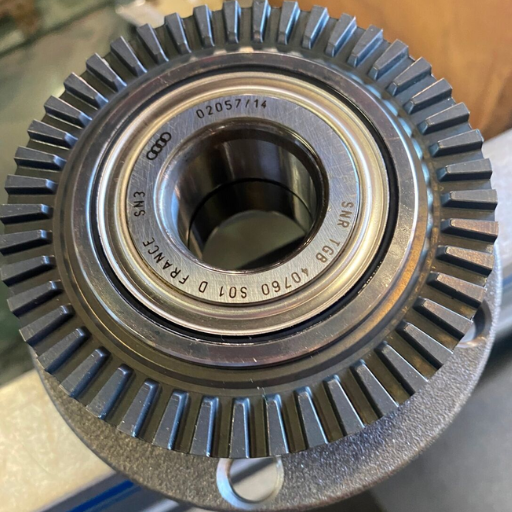
A malfunctioning wheel bearing in a vehicle affects the overall performance in a negative way in many different aspects. Based on my observation, the most noticeable signs include loud noise, which is usually a growl or whine from the wheel when the car is in motion. If we set aside the noise, a faulty wheel bearing has an adverse effect on a car’s handling, taking away from the accurate steering ability of the driver, which can be dangerous while driving at some speed. Uneven wear of tires could also happen, along with an increase in drag causing a negative effect on fuel economy. Failure to resolve a faulty wheel bearing in a timely manner leads to further impairments of the suspension system which is detrimental for the drivers as well as their experience of one’s vehicle being smooth and safe.
Impact on steering and handling
As the speed increases, or while turning, that’s when a bad wheel bearing has a drastic effect on steering and control. It throws off the user’s ability to control the wheel and dampens the precision, which in turn makes the vehicle feel less steady while driving. As a result of this lack of control, the likelihood of an accident increases making the fixing of the wheel bearing a top priority.
Potential damage to other components
I know that a bad wheel bearing is not an issue that happens in isolation—there will be a cascade of wheel bearing failures across key vehicle components. The damage is broken down as follows:
- Tires – The uneven movement caused by a wheel bearing when it begins to fail may also be responsible for the uneven wear of the tires. This eliminates the wear and tear of the tires and creates driving dynamics that are not stable, and as a consequence, tire replacement is done on time.
- Suspension System – A bad bearing causes excess vibration and allows the wheel to have more play which puts stress on suspension components like struts and ball joints that are necessary to stabilize the vehicle.
- Braking System – The placement of the brake rotor to the caliper might be disturbed due to a faulty wheel bearing. This disturbance might create an uneven brake application, decrease the efficiency of brake force application, or, in extreme cases, the braking system may completely fail.
- Axle and Hub Assembly – The impacted wheel’s inability to rotate responsively may stress and damage the axle hub assembly. This will also make the components wear out quicker than normal and increase the number of repairs needed, and the cost of fixing it will be significantly more expensive.
Tackling a wheel bearing that’s going bad will save you from a long stretch of repair costs. All it takes is paying attention to early signs like strange sounds, feeling vibrations that could be coming from loose steering, and averting these secondary damages from going further.
Effects on fuel efficiency and tire lifespan
Worn wheel bearings can considerably affect fuel usage and the longevity of tires. They increase friction, which makes the engine work more than necessary and, therefore, affects fuel economy. Furthermore, the damage to the wheel can cause it to wear off unevenly, cutting off the total timespan the tires could have been used. Timely repairs promote the best functioning and lifespan of the vehicle and minimize costs as well.
What are the most common symptoms of wheel bearing failure?
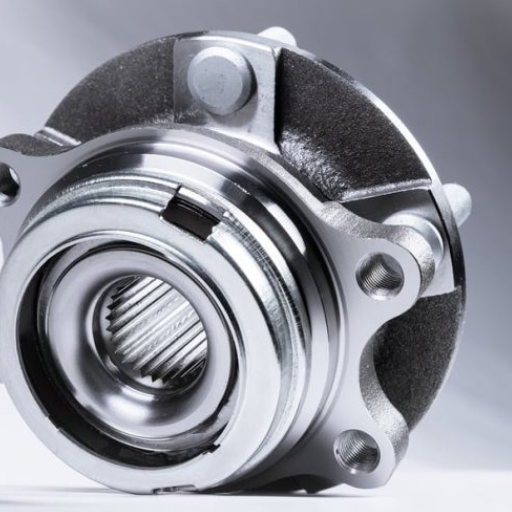
In my experience in wheel bearing replacement, I’ve come across unusual noises made by the wheel area that include grinding, whining, and even growling. Unusual vibration of the wheel bearing or steering wheel can be another indication of an issue – usually at high speeds. As the problem worsens, one might observe a feeling of being forced to one side while driving or might notice an increase in the instability of the vehicle. It is better to attend to these indicators on time as otherwise, it can lead to heavy repairs and inconvenience for the owner.
Noise that gets louder when cornering
More often than not, excessive noise during cornering can be attributed to the presence of a faulty roller bearing. This is due to the increased weight shifting and shear forces present during cornering, causing an already damaged bearing to produce more severe grinding, humming, or rumbling noise than it would on its own. Immediate corrective action is required as a malfunctioning wheel bearing can affect how the vehicle drives and poses a major safety concern.
ABS sensor malfunctions and warning lights
it can be said that the malfunctions of the ABS sensor are mainly due to dirt, debris, or any damage that affects the sensor. If the ABS warning light appears on the dashboard, it is an indication of a malfunction that needs to be repaired. After all, quite often, it is enough to simply clean the sensor and look for broken connections. But if the sensor is completely out of order or is in a damaged state, it will have to be replaced in order to restore the normal function of ABS. Otherwise, the warning should be ignored because one may become a victim of poor braking performance during an emergency, so it is advisable to always act fast once the signs become evident.
Wheel wobble and excessive play
Wheels that have excessive play or wobble around are definitely having problems, most likely having to do with the suspension of the vehicle, its alignment of the wheels, or its steering. Some causes may be differentially worn-out ball joints, tie rods, wheel bearings, or unduly adjusted tires or wheels. Correcting such problems has to do with checking for worn components, balancing the tires, and doing a wheel alignment. Such issues should not be neglected, for doing so can cause unsafe driving conditions or more serious damage to the vehicle; hence, it should be noted.
How can you tell which wheel bearing is going bad?
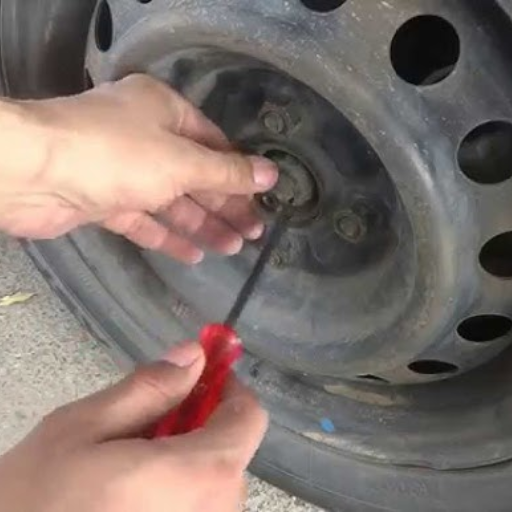
Usually, a bad wheel bearing tends to whine or grind while in motion, resulting in irregular tire wear or even shaking in the steering wheel. If I were to suggest how one could locate the broken bearing, I would recommend looking for any noise while turning. For example, a greater turning radius would mean that there is a bigger flaw on the opposite side of the bearing. Furthermore, when spinning the wheel itself, one could notice hollowness or roughness even if you were performing a hands-on examination. Such actions should be followed with a thorough diagnosis of the aspect in order to conclude that it is damaged.
Identifying left or right-side issues
I examine the problem roughly by listening from the left or the right and doing a physical examination At the same time. When I get into a car, I try to determine in which direction the sound is coming from – for example, if it becomes more pronounced during a left turn, it usually suggests that the problem is with the right-side bearing since there has been an excessive load and stress on that side due to the weight shift. The same argument applies to the left side; during right turns, the left side gets more affected. I inspect the suitable wheel bearings by standing the car on ramps and turning the suspected wheel. I am looking for any wobble or grinding feeling. This approach is good since there is no way of performing unwanted repairs when I have not made a correct diagnosis.
Front-wheel vs. rear-wheel bearing symptoms
It’s my experience that there are quite a few factors that help distinguish between the front-wheel and rear-wheel-bearing symptoms. Here is how I go about it:
- Location of the Noise
A noise coming from either the front or rear wheels can usually give enough correct information to determine if the problem lies with a seized front wheel bearing or rear wheel bearing. As failing front passenger side wheel bearings squeak, these noises are usually heard from the front area of the vehicle. However, the rear suspension bearing may also make noises, but in most cases, it would be the upper control arm rear suspension bearing.
- Steering Impact
Destruction of the front wheel bearings has an impact on the steering performance of the car since they are closely associated with the steering system. Front-wheel bearing failure, on the other hand, may result in other symptoms like a vibrating steering wheel or some steering play. But that is not always the case, as some rear wheel bearings only affect the steering motion of the car in the same manner but do not affect the torque of the axles.
- Vibration and Play
While examining the individual wheels of a vehicle, if there is a possible problem with the front wheel, which had been throwing out vibrations or any other problem, there would be a significant amount of play at the center hub. While discussing the topic of the problems related to the car at any wheel it can be noted that issues which are related to the rear wheels will most definitely lead to the pulling and the starting of an unstable ride.
- Wheel Rotation Inspection
To further note the issue, I lift the vehicle up and check the wheels individually. The A ratio of a defective front wheel bearing on the other side has palpable effects that include the presence of resistance, roughness, and even grinding when one attempts to rotate the affected front wheel. The same applies to the rear wheel during rear bearing diagnostics, but in both cases, I do all this on the condition that there is no uneven movement.
These considerations — noise position, effect of steering, vibration, and external examination- help me to stare down the problem and determine whether it’s in the front or back wheel bearings with confidence. This is how a systematic analysis is done to guarantee an accurate diagnosis of the problem and that every repair addresses the reason.
When should you seek professional help for wheel-bearing problems?

When addressing wheel bearings concerns, it’s nice to seek professional assistance if any unsavory symptom indicates that something serious is happening. For example, if I hear a grinding or a growling noise that starts getting louder when accelerating or if I feel vibrations affecting the car’s handling, it’s time to do something. These are usually replacement indicators for parts that are damaged or worn out and can eventually cause issues in the drivetrain as well as pose a safety hazard if not taken care of. In addition, I strongly advocate preventative steps such as maintenance and problem detection in the early stages of bearing issues. However, bearing problems are such that there is no chance of guessing with regard to the tools and the expertise that is required to repair or diagnose them properly. You may also contact an expert when these symptoms come up to ensure that the performance and safety of your vehicle remain unharmed.
Signs that indicate immediate attention is needed
In case of loud grinding sounds, wobbly wheels, sluggish steering, or uneven tire wear, it’s a good idea to have these examined right away. Waiting longer could risk your safety and lead to expensive repairs; therefore, it is imperative that these signs be taken care of alongside expert diagnosis.
Risks of driving with a failing wheel bearing
When driving a car that has a failing wheel bearing, one essentially opens oneself to a host of potential glitches or problems. Speaking from experience, one of the most crucial worries is the risk of the wheel ceasing to rotate entirely, which could lead to loss of control and a disastrous accident. Moreover, a damaged bearing increases friction which generates a lot of heat, and this may end up burning components such as the axle or brake system. How can someone be so careless? I’ve seen how negligence leads to ripple effects and causes increased costs of repairs as well as long periods of time during which the vehicle is inoperable. So, it makes more sense to have the problems dealt with as early as possible. Not only does it allow for safer driving, but it also increases the life expectancy of the car.
What’s the typical lifespan of wheel bearings, and how can you extend it?
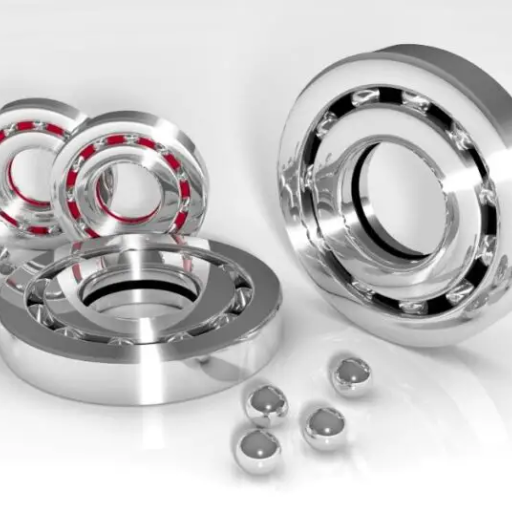
Wheel bearings can vary between 85K and 100K. The usual lifespan of a wheel bearing can depend on lots of factors such as maintenance practices, quality standards, and moving conditions. However, the performance and average endurance can be enhanced by installing them the right way, avoiding driving through mud and deep water and maintaining schedules such as checking for abnormal vibrations and noises in a timely manner. As long as the issues are confronted in an early stage, further damage and wear can be avoided on your wheel bearing.
Factors affecting wheel bearing longevity
In my opinion, numerous important parameters affect the lifetime of wheel bearings directly. First, the standard of the bearings is crucial: high-grade, well-engineered components usually have longer lifespans than low-end ones. Secondly, the driving environment is rather important as well; frequent driving in adverse conditions such as muddy or salt-encrusted roads can increase bearing damage because contaminants can penetrate into the bearing assembly. Another important aspect is proper mounting: mated but misaligned or wrongly mounted bearings put stress on each other and shorten the service life. Last but not least, one should strive to maintain, for example, seals, avoid any unusual noise, fix the performance, and any other technical costs on time. If you attend to these matters correctly, you will be able to prolong the usefulness of your wheel bearers.
Maintenance tips to prolong wheel bearing life
to avoid having to replace wheel bearings too soon, I suggest following these few simple steps. First of all, make sure that the bearing is always well packed with grease that is suitable for the application since that would help avoid excessive wear by lowering friction. Make sure to regularly grab the bearing seals and clean them out to prevent ingress of dirt, moisture, and other harmful materials. Periodic cleanings become even more necessary if your car is placed in water-logging or debris-rich places too often. Furthermore, be attentive to any odd sound or motion while driving – these are typically the first omen of bearing failure. Rectifying such problems can prevent you from bigger problems that are more expensive. Following these practices makes it possible for you to increase the life span and the reliability of your wheel bearings many times over.
Reference
- Kelley Blue Book: How Do I Know if I Need a Replacement?
- Meineke: 6 Signs of a Bad Wheel Bearing
- MOOG Parts: How Long Do Wheel Bearings Last?
Frequently Asked Questions (FAQs)
Q: What are the most common symptoms of bad wheel bearings?
A: The most common symptoms of bad wheel bearings include unusual noises such as grinding, humming, or rumbling, especially when turning or accelerating. Other signs include vibrations in the steering wheel, uneven tire wear, and the vehicle pulling to one side while driving. A failing wheel bearing can also trigger the ABS warning light on your dashboard.
Q: How can I check for a bad wheel bearing?
A: To check for a bad wheel bearing, you can start by listening to unusual noises while driving. If you suspect a problem, jack up the car and try to wiggle the wheel. Excessive play could indicate a loose bearing. You can also spin the wheel by hand to feel for any roughness or grinding. If you’re unsure, it’s best to have a mechanic or technician perform a thorough inspection.
Q: What causes wheel bearing noise?
A: Wheel bearing noise is typically caused by wear and tear on the bearing components. As the steel balls or tapered rollers inside the bearing wear down, they can produce a grinding or humming sound. Contamination from dirt or water, lack of lubrication, or improper installation can also contribute to wheel bearing noise. The noise often increases with vehicle speed.
Q: Can a bad wheel bearing cause uneven tire wear?
A: Yes, a bad wheel bearing can lead to uneven tire wear. When a wheel bearing starts to fail, it can cause the wheel to wobble or tilt slightly, which affects the tire’s contact with the road. This uneven distribution of weight and pressure can result in irregular tire wear patterns. If you notice uneven tire wear, it’s important to have your wheel bearings checked.
Q: How long can I drive with a bad wheel bearing?
A: It’s not recommended to drive for an extended period with a bad wheel bearing. While you might be able to drive for a short distance, continuing to do so can be dangerous and may lead to more severe damage. A completely failed bearing can cause the wheel to seize or even detach from the vehicle. If you suspect a bad wheel bearing, it’s best to have it inspected and replaced as soon as possible.
Q: What’s the importance of understanding wheel bearings in car maintenance?
A: Understanding wheel bearings is crucial for proper car maintenance. Wheel bearings are essential components that allow the wheel to rotate smoothly on the axle hub. They consist of precision-engineered steel balls or tapered rollers held together by a metal ring. Regular inspection and maintenance of wheel bearings can prevent unexpected breakdowns, ensure safe driving, and extend the life of your vehicle’s wheels and tires.
Q: How often should wheel bearings be replaced?
A: The lifespan of wheel bearings varies depending on driving conditions and vehicle quality. In general, wheel bearings can last anywhere from 85,000 to 100,000 miles. However, some high-quality wheel bearings can last the entire lifetime of a vehicle. Regular inspections during routine maintenance can help identify when replacement is necessary. If you notice any symptoms of a bad wheel bearing, it’s best to have them checked regardless of mileage.
Q: Can a failing wheel bearing trigger the ABS warning light?
A: Yes, a failing wheel bearing can trigger the ABS (Anti-lock Braking System) warning light. Many modern vehicles have speed sensors integrated into the wheel bearing assembly. If the bearing starts to fail, it can affect the sensor’s ability to accurately measure wheel speed, which is crucial for the ABS to function properly. This malfunction can cause the ABS warning light to illuminate on your dashboard.
